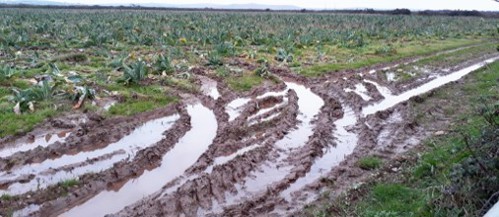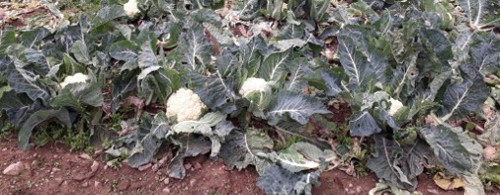





Examining farmer-led approaches to better measurement and management of food waste in primary production of brassicas
This project will be investigating on-farm efficiency, measuring waste management pre-farm gate and identifying waste reduction opportunities in the brassica sector.
Producers will identify how to best quantify and monitor farm productivity and food waste. The group is supported by technical sustainability specialists 3Keel.
Producers will examine the impact of food production waste on their business and design a trial together to help inform future business practices and processes.
Both cauliflowers and kale are hand-harvested, and each field undergoes several harvest runs.
Cauliflowers:
Pre-harvest losses include damage from tractors running over crops, pests such as pigeons and rabbits eating the cauliflower curd, hoeing damage, disease, rot, sun damage, etc. These are rejected at the point of harvest, in the field. Cauliflowers are trimmed and packed into packaging at the point of harvest in the field.
Some cauliflowers may be rejected at harvest due to over-maturity and others may be left in the field when they could have been picked. Some cauliflowers fail to develop a curd (the white centre).
Kale:
Kale may be rejected at the point of harvest if leaves are too yellow, old, diseased, damaged by pests or from harvesting technique.
At the packhouse, woody kale stems are separated as these are not marketable/typically consumed, and some product may be rejected due to frost-damage or the reasons above.
For each farm, 2 locations will be visited, with a minimum of 2 fields at each location, and 5 x 20 metre-long samples per field.
Sample points will be chosen randomly, to include some field edge as growers report higher losses due to pest and tractor damage.
Crops in the sample area will be counted and categorised by the reason for rejection. These figures will be compared to the number planted.
The coordinator visited fields in Cornwall in early November, just after the end of harvest for those fields.
Instead of sampling one row at a time, it was sensible to sample two adjacent rows each time, which widened the sample size. As many cauliflowers rolled into the furrows, cauliflowers were also counted in the furrows either to the right or left of each row (2 furrows for 2 rows).
It was often appropriate to state multiple reasons for rejection for some cauliflowers (e.g. diseased and overmature, yellow and oversized).

Results can be found under the results and reports tab on the field lab page.
At the workshop and in subsequent discussions, the group agreed on a plan for measuring on-farm waste/surplus.
Cauliflowers:


Kale:
The growers met virtually in September with the coordinator and researcher, to discuss the major hotspots where brassica waste/surplus occurs, and the main reasons driving this waste.
Both cauliflowers and kale are hand-harvested, and each field undergoes several harvest runs.
Cauliflowers:
Pre-harvest losses include damage from tractors running over crops, pests such as pigeons and rabbits eating the cauliflower curd, hoeing damage, disease, rot, sun damage, etc. These are rejected at the point of harvest, in the field. Cauliflowers are trimmed and packed into packaging at the point of harvest in the field.

Some cauliflowers may be rejected at harvest due to over-maturity and others may be left in the field when they could have been picked. Some cauliflowers fail to develop a curd (the white centre).
Kale:
Kale may be rejected at the point of harvest if leaves are too yellow, old, diseased, damaged by pests or from harvesting technique.
At the packhouse, woody kale stems are separated as these are not marketable/typically consumed, and some product may be rejected due to frost-damage or the reasons above.
The group is comprised of three large-scale brassica producers; two with farms in Devon & Cornwall, and the third based in Lincolnshire. All supply major supermarkets, with total production spanning nearly 6000ha. UK brassica production is high-investment with low returns and razor sharp profit margins, meaning that any potential gains in efficiency would help the industry remain viable in a competitive market and retail price deflation in the UK.
Two of the growers will focus data collection on cauliflower waste/surplus. The third grower do not grow cauliflowers so will focus on kale.
August 2020
September 2020
November 2020
January 2021
January 2021

Innovative Farmers
Bristol
As the Innovative Farmers manager, Becky engages with farmers, scientists, industry bodies and advisors to launch on-farm trials and share results. Her background includes environmental reporting of water catchments and an MSc in Environment and Development, focusing on global and local food systems and life-cycle analysis.

Oxford